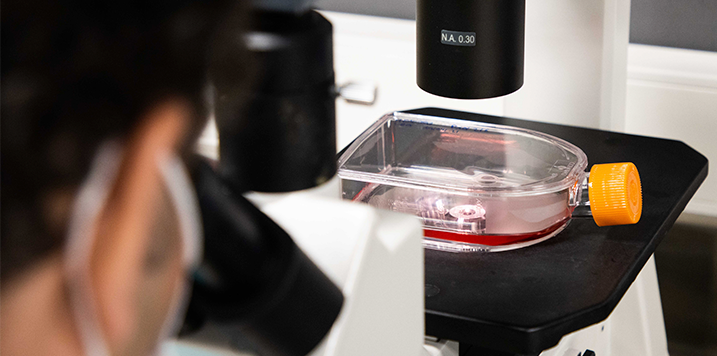 15 June, 2021
15 June, 2021The number of diseases associated with older people is rising due to the ageing population. It is estimated that worldwide one in three women and one in five men over the age of 50 will suffer an osteoporotic bone fracture. There are also other cases of impaired bone regeneration, such as trauma with infections caused by car accidents.
Bone is the most transplanted tissue after blood, making it essential to count on graft materials. In the search for optimised regeneration solutions, the cmRNAbone project sets out to develop a novel gene therapy that will improve quality of life for people with major traumatic injuries or degenerative bone diseases such as osteoporosis.
The proposed approach is a unique combination of advanced genetic research, nano- and bio-technology, and 3D printing. The cmRNAbone project aims to develop chemically modified RNA that encodes specific proteins, targeting neurogenesis, vasculogenesis and osteogenesis – three major processes that influence the rate of healing. The RNA sets produced will be combined with non-viral vectors in order to incorporate the RNA in a biomaterial ink formulation. CIDETEC Nanomedicine will develop cmRNA delivery vehicles based on optimised non-viral polysaccharides suitable for the developed matrix.
A 3D printer specifically designed for the implant will then help demonstrate bone regeneration capability in practice. The new findings will be applied in two simultaneous preclinical studies, in order to show the validity and clinical relevance of the designed therapeutics in critical-size and osteoporotic bone defects.
The project, coordinated by AO Research Institute Davos and backed by over €6M of EU funding, is made up of 11 European partners from Austria, France, Germany, the Netherlands, Spain and Switzerland. With the support of a clinical and scientific advisory board, the SME-led consortium will ensure a smooth, quick introduction into clinical practice once the project is completed. In the long term, the findings could imply a regenerative approach not only for fragile fractures and large bone defects in young and older persons, but also for other major diseases that affect millions of patients.
Subscribe to our newsletter. Just insert your e-mail and you will receive the latest news.